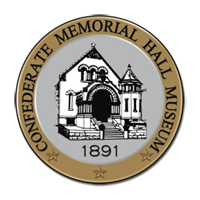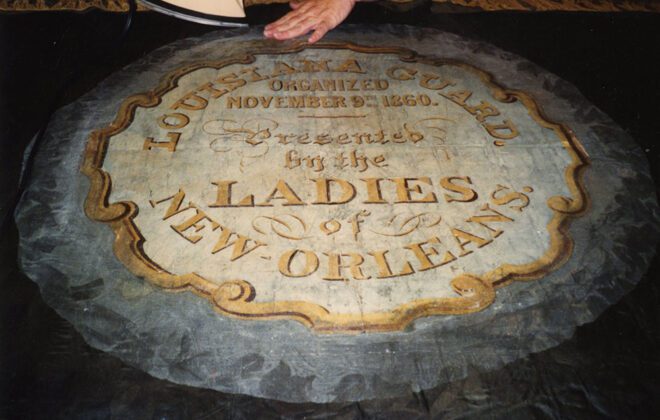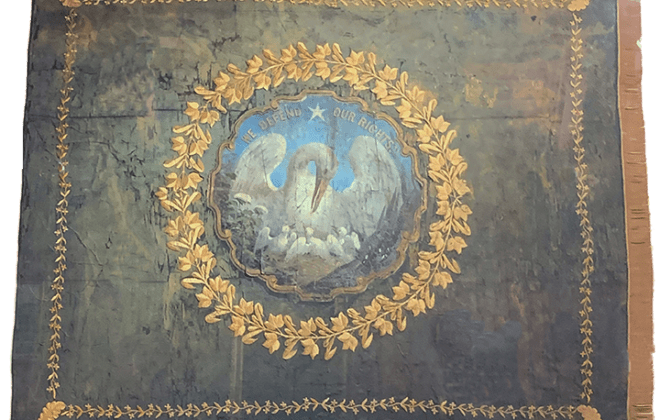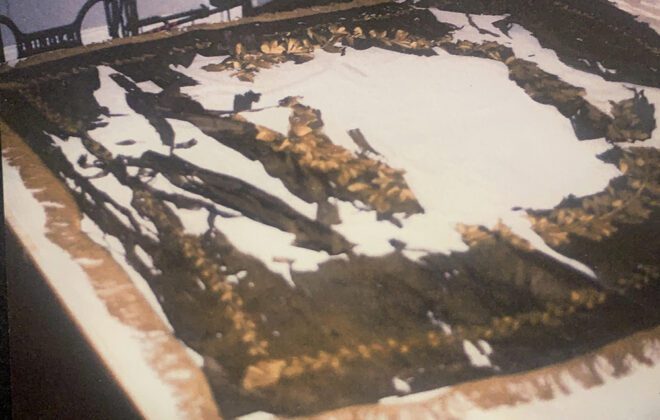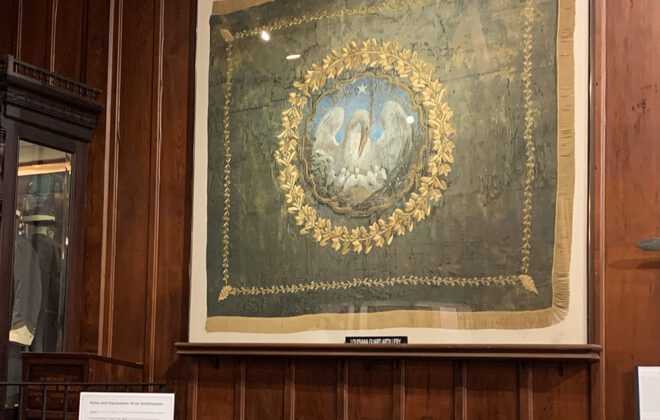There are over 140 flags in the collection of Memorial Hall, most of which are from Louisiana regiments. Many restored flags are always on display. Notable examples include the flag that adorned the coffin of Confederate president Jefferson Davis, that of the Washington Artillery, famed artillery unit of New Orleans, the First Florida Infantry which saw action along side many Louisiana units at Shiloh, and the Sixth Louisiana (Orleans Rifles) embroidered with the inscription “Let Us Alone, Trust In God.” There is an active flag restoration program and donors may contribute funds to be used toward the restoration of any flag.
Flag Collection
Adopt A Flag Program
In 1989 friends of Memorial Hall paid for the conservation of a Confederate Battle Flag given to the museum by Rene Beauregard, son of General PGT Beauregard. This action piqued the interest of other members of the Foundation, reenactment groups and family members. The Adopt-A-Flag Program was initiated.
The Flags of the Old Dominion Guards, 1st Louisiana Infantry (Dreux’s Battn.) were conserved soon after. As word spread about the conservation program the flag of the 10th Louisiana Infantry was adopted by a Canadian Reenacting Group that portrayed the unit. They traveled to New Orleans from Ontario to unveil the flag. The trend continued with local reenactment groups raising the necessary funds to conserve flags. It was not unusual to visit a Civil War reenactment and see the groups selling bowls of beans for $3.00 with the proceeds going toward the flag conservation program.
Currently 24 Flags are on display, while 9 conserved flags await framing, and several others are being considered for conservation. Contributions can be made to the Memorial Hall Foundation by sending a check, using a credit card or by contributing through the website.
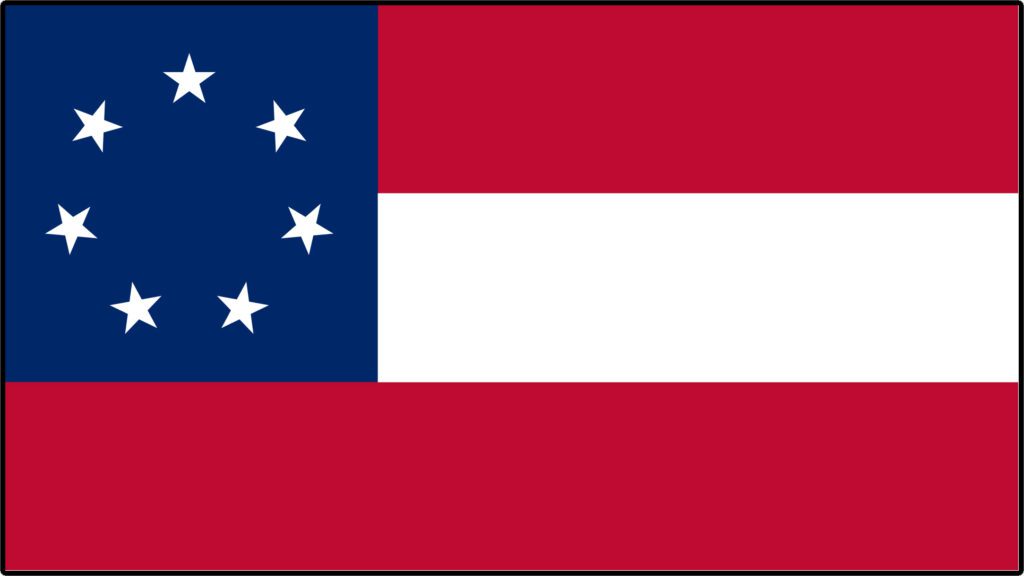
First National Confederate Flag "Star and Bars" 1861 - 1865
Adopted by the provisional Confederate Congress in February of 1861, this was the first of three national Confederate flags. The stars are usually arranged in a circle and number seven or more. Even though the national flag changed in 1863, this flag saw continued use until 1865.
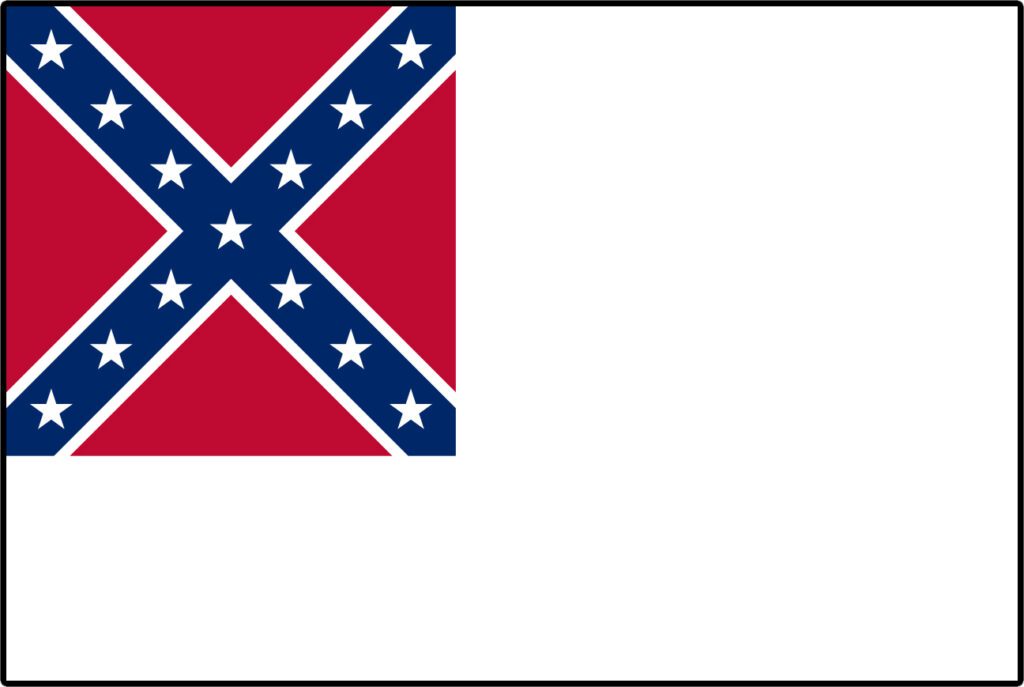
Second National Confederate Flag "Stainless Banner" 1863-1865
Replacing the “Star and Bars” in May of 1863, the first official use was at the funeral of Thomas Jonathan “Stonewall” Jackson. The flag was adopted by the permanent congress on May 1, 1863.

Third National Confederate Flag 1865
Adopted in February 1865, as a result from complaints made by the Confederate Navy that he predominate white color of the second national flag caused it be mistaken for a flag of surrender.
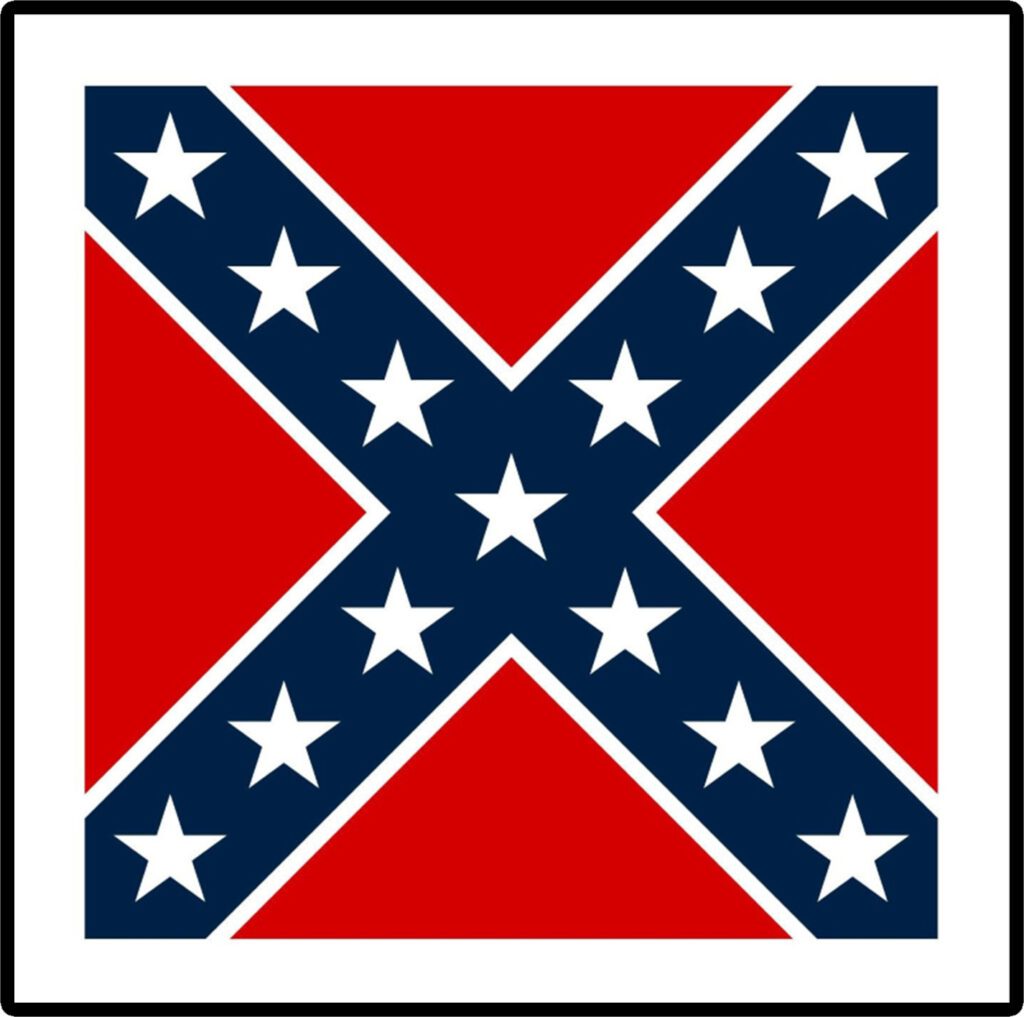
Confederate Battle Flag (Square) Army of Northern Virginia 1861-1865
The design that was rejected early in 1861 as the Confederate national flag was adopted by Joseph E. Johnson and P.G.T. Beaureguard for the battle flag then named the Army of the Potomac. The similarity between the stars and bars and the stars and strips caused many cases of mistaken identity during the first battle of Manassas or Bull Run in July of 1861. The flag was issued in the fall of 1861. In the early summer of 1861, the army was renamed the Army of Northern Virginia (ANV) commanded by Gen. R.E. LEE.

Confederate Battle Flag (Rectangular) Army of Tennessee (1864-1865)
After taking command of the main Confederate army in the west, Gen. Jos E. Johnson adopted this variation of the Virginia Battle Flag for the Army of Tennessee. Johnston’s attempt was met with disfavor by many commands who were reluctant to give up the flags which they had fought under from Shiloh to Chickamauga. After the war, this design was adopted as the official flag of the United Confederate Veterans and today most people refer to as “The Confederate Flag”. The ANV was never the official flag of the Confederacy and was not called “The Stars and Bars”. It is the most distinctive and popular emblem associated with the Confederacy.
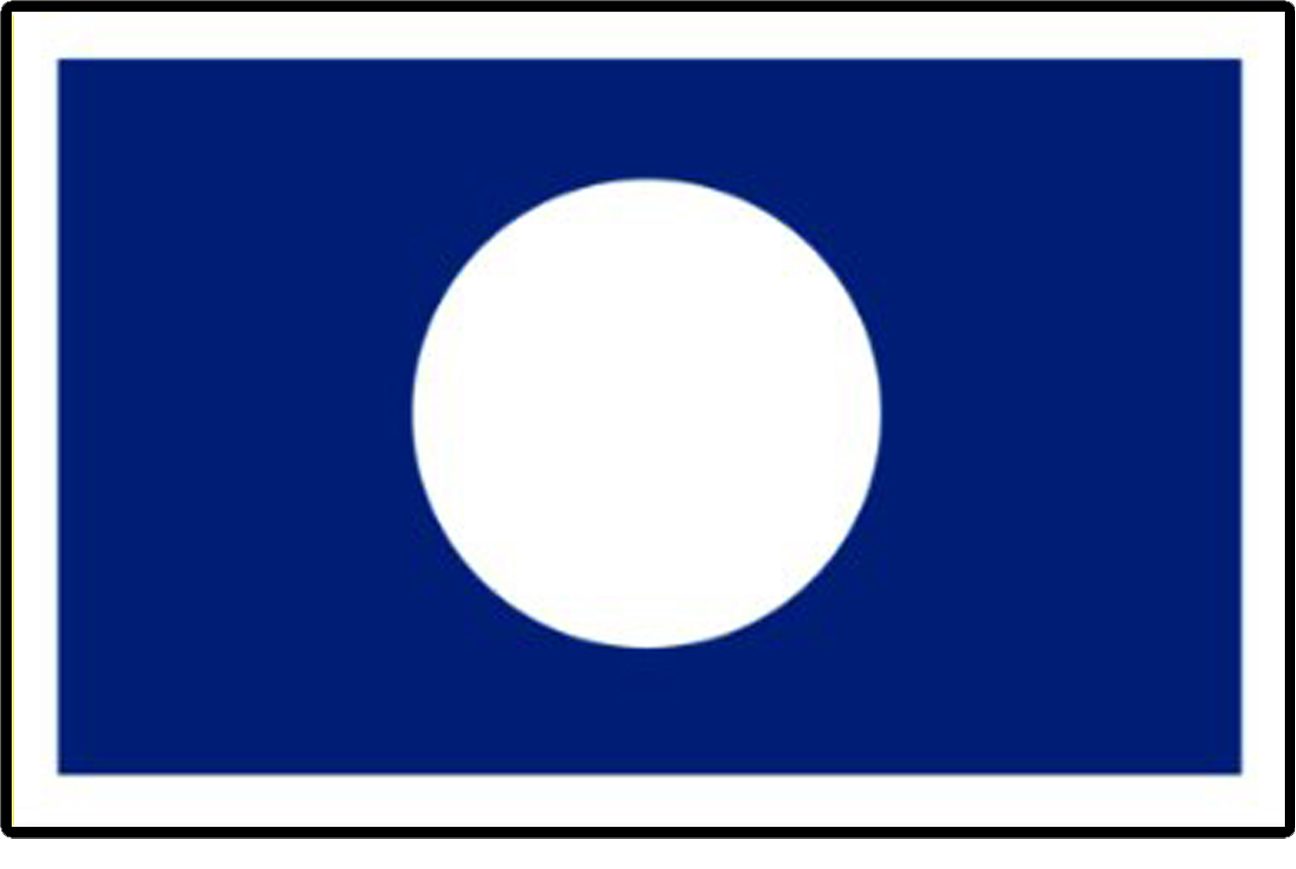
Hardee's Corps Flag Army of Tennessee (1862-1865)
The blue flag with the circle of white told the Yankees that they facing the troops of Gen. Wm. J. Hardee. Because of the large number of Tennessee regiments in this corps the flag is sometimes referred to as the “Tennessee Moon” flag. This flag saw action in the battles in the west.
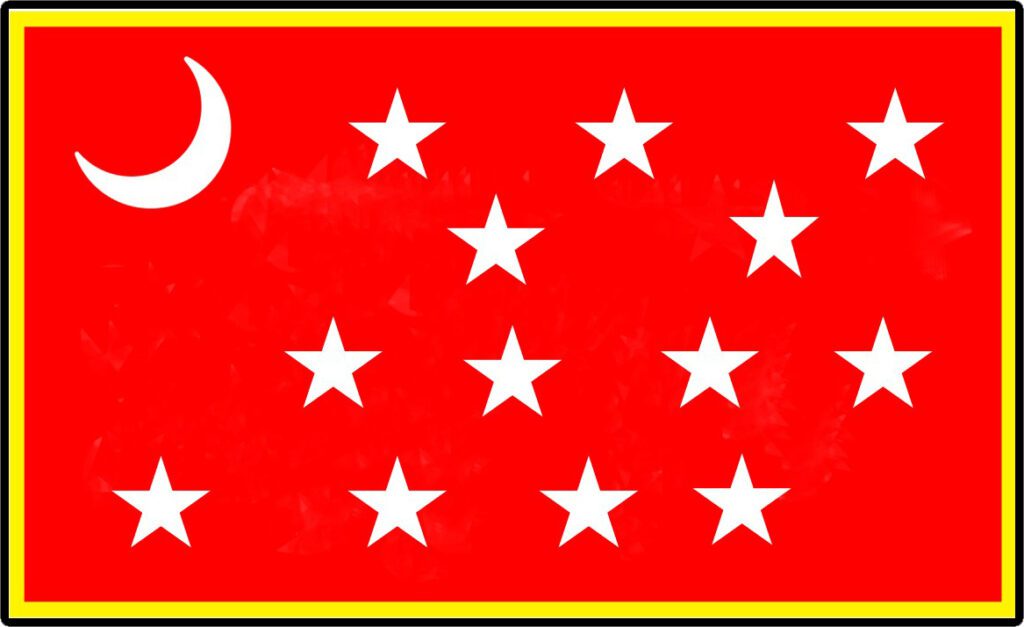
Van Dorn's Corps Flag 1863
Gen. Earl Van Dorn adapted a red banner with stars and crescent moon as the battle flag for his command. In 1816, the command operated in Missouri and Arkansas but was transferred to Northern Mississippi. Van Dorn was relieved of command after the Battle of Corinth in 1862.
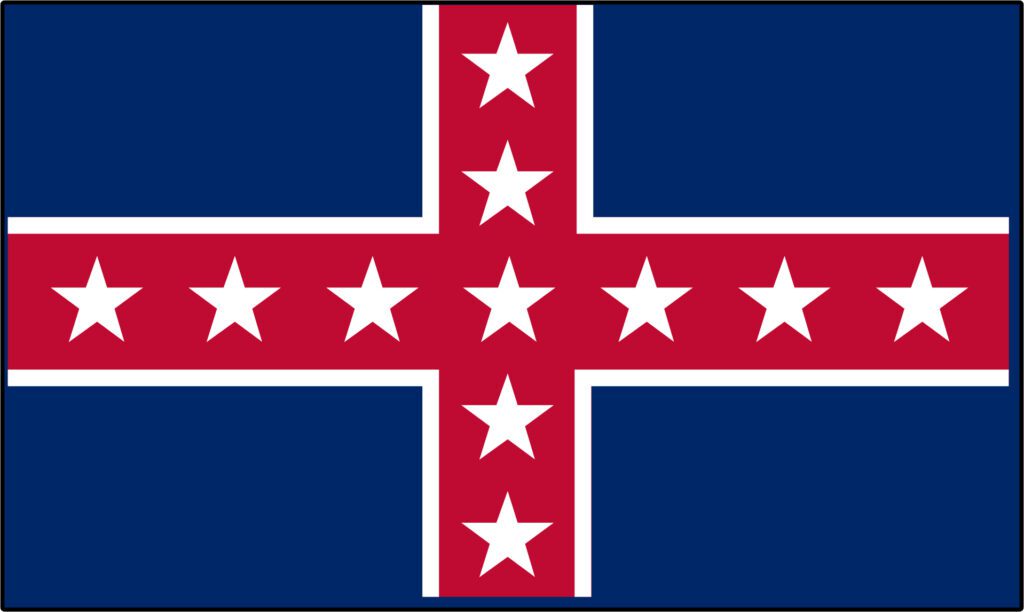
Polk's Corps Army Flag Army of Tennessee (1863-1865)
The battle flag of Gen. Polk’s Corps saw action from Shiloh through the final surrender of the Army of Tennessee. The red Saint George’s cross is symbolic of the Episcopal church of which Gen. Polk was Bishop of Louisiana.

Bonnie Blue Flag (1810-1865)
During the Civil War, some of the units from Louisiana and Texas adopted the Bonnie Blue flag as their official banner of the Confederacy. A flag with a blue field and a single white star was used by the Louisiana Florida Parishes when they formed the Republic of West Florida in 1810. The Republic was short lived and soon dissolved. In Texas, various lone star designs were used during the was for Texas Independence in 1836. The Bonnie Blue gained popularity throughout the South through the song “THE BONNIE BLUE FLAG” written by Harry McCarthy in 1861. The song was sung by Mr. McCarthy in a New Orleans theater before a packed house. The Audience went wild, and the song was an instant success.

Louisiana Secession Flag (1861-1865)
The flag adopted by the delegates to the Louisiana’s secession convention in January of 1861 represented Louisiana’s historical roots. The colors red, white and blue were symbolic of France, red and gold colors of Spain and 13 stripes of the United States.
